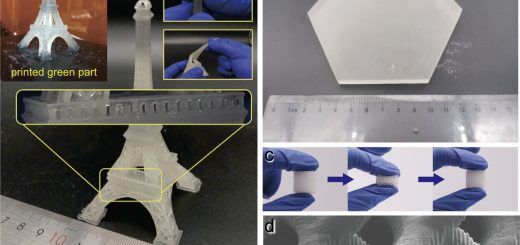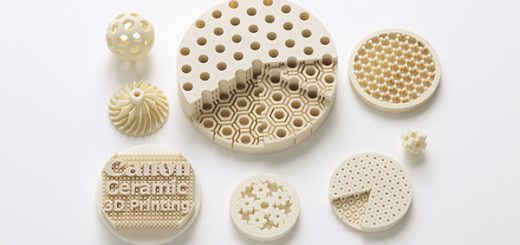Meet the Challenge of Aluminum Alloy – F357 3D Printing
Aluminum alloys (or “aluminium” ) are a bit of a question mark. If you’re working in a field that requires strong, lightweight parts, there are metal alloys with higher specific strengths, i.e., a better ratio of strength to density, such as titaniums. If you’re looking for thermal management, there are certainly alloys with better heat-transfer coefficients, such as copper alloys. If you’re aiming for the lowest density or a higher galvanic potential, magnesium alloys are a great choice. Despite all of this, aluminum alloys are one of the most prevalent alloys that one encounters in daily life, and there’s a really good reason for this: aluminum alloys are one of the best when it comes to the trade-off between cost, performance, and manufacturability.

These same trade-offs drove much of the early development in aluminum when it came to metal 3D printing, and in particular laser powder bed fusion (LPBF). Aluminum alloys are generally grouped as either casting alloys or wrought alloys, and much of the original success in printed aluminum was with casting alloys. Wrought alloys can be desirable for demanding applications, particularly in aerospace where alloys like 2024, 6061, or 7075 see a lot of use, but these higher strength alloys suffer from poor weldability. Even 6061, which is considered to be a weldable aerospace grade alloy, isn’t well-suited for laser powder bed fusion. Since LPBF is at its most basic level a welding process, how can this be the case? It turns out that “weldability” is not the primary criterion here, but rather “autogenous weldability”.
Autogenous weldability is a mouthful but is really just a way of saying that an alloy is weldable without a filler material. This isn’t as much of a problem in a normal welding application, but the powder bed in an LPBF printer is a single material, meaning that there isn’t a great way to get a “filler” into the process. Because of this, alloys that aren’t autogenously weldable can present a problem, which in many of these cases presents itself as a tendency to crack while printing.
So, casting alloys it was! Some of the original success in printing aluminum came with AlSi12, an alloy that is 12% silicon. This is a fairly significant amount of Si for an aluminum alloy, but the Si serves to increase the flowability of the meltpool, and also to decrease the amount of contraction as the meltpool solidifies. In this sense, the more silicon the better! But in the sense of mechanical properties, the high silicon content is not a good thing.
The next step was a natural one: reduce the proportion of silicon in the alloy from 12 to 10% and add magnesium to increase the strength. The resulting was AlSi10Mg, affectionately known by insiders as “alsitenmag.”
Even with the additional magnesium, however, AlSi10Mg wasn’t an ideal stopping point; parts printed with it still didn’t meet many of the mechanical requirements of the final applications. This printed alloy tends to have low elongation, which is pretty significant: the higher the elongation, the tougher the material. Even with this deficiency, many people stopped here and settled for “alsitenmag” as acceptable, even though it wasn’t what they were really looking for.
![]() Stronger—but also safer
Stronger—but also safer
A large proportion of the applications that were good candidates for printing were originally castings in A356, one of the most widely used cast aluminum alloys. It is lightweight and extremely corrosion resistant. To push the mechanical properties a bit further one can add more magnesium, which leads to A357, a stronger alloy that can be heat treated to better properties, but is a bit harder to cast. This could be an ideal candidate for LPBF, but there’s a catch: A357 also contains 0.04 to 0.07% beryllium—and beryllium is one of the most toxic metals to humans there is. Especially if it is inhaled, which can happen during powder-handling and post-processing. Not an ideal fit for AM…
Fortunately, the beryllium can be eliminated from the alloy, with the result being F357 (think F for Free of beryllium).
F357 is lightweight, offers great weldability, can be anodized, has high corrosion-resistance and is tolerant of a wide range of temperatures. It’s an excellent candidate for those AM parts with thin walled, complex structures that you see in a number of aerospace and high-end motorsports applications.
VELO3D has qualified F357 aluminum alloy for Sapphire AM systems over the past year or so, working closely with partners PWR and Duncan Machine Products. While a number of other AM equipment makers are exploring this material as well, I’d like to explain what VELO3D are doing to ensure that your results with it are of the highest quality possible.
![]() How VELO3D tamed aluminum F357
How VELO3D tamed aluminum F357
For one thing, VELO3D technology produces a better surface finish, especially at those low angles that VELO3D has known for (think SupportFree!). This is important because many of the applications where you see F357 being used are in high-stress environments—and superior surface finish has two key advantages: better corrosion resistance and better fatigue life.
Another issue VELO3D’s technology helps with is avoiding hot-tearing defects, which can occur with F357 because its reduced silicon content can lead to cracks as it cools. VELO3D’s parameter sets and high-fidelity laser controls are specifically tuned to address this potential problem.
Humidity is another issue that you’re likely to encounter when you’re printing with aluminum. The powder is often “stickier” and tends to clump, especially with legacy “snowplow” recoater systems. Aluminum powder is an excellent desiccant, and moisture will adsorb onto the surface of the particles immediately. When your humidity inside the build chamber creeps up, aluminum powder can be difficult to spread, and can often lead to build-killing powder-bed defects. VELO3D’s non-contact recoater completely avoids such problems—and, of course, VELO3D‘s extremely tight build chambers maintain oxygen and humidity levels far lower than most of VELO3D ‘s competition, with active control of both at all times throughout a build.
The combination of F357 with the capabilities of the VELO3D metal additive system has significant advantages over AlSi10Mg and legacy metal AM and can eliminate engineering compromises that in the past could not be avoided.
Source: Velo3D
For press release, welcome to send to 3D Science Valley at 2509957133@qq.com




Recent Comments